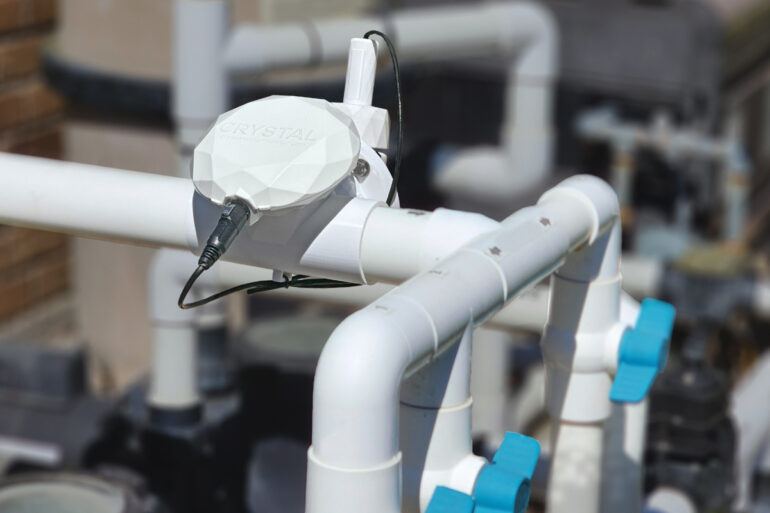Conservation Creation
Examining the Waterco MultiCyclone Centrifugal Filter


With water conservation at the forefront of so many people’s minds these days, it’s no surprise the idea has trickled down into the pool industry. But Ted Kampe, Western division sales manager for Waterco USA in Augusta, Georgia, has been thinking about it for much longer. A dozen years ago in Australia, he developed the Waterco MultiCyclone Centrifugal Filter, which saves water and makes the cleaning process quicker and easier.
At the time, Australia was experiencing severe drought that threatened the pool industry, and “pools were seen as a water waster,” Kampe says. The filter, which was released in the United States 10 years ago, operates on centrifugal cyclonic action: The pool pump moves water into the unit where it is diverted to a number of mini cyclones, which then boost the water’s velocity and the centrifugal action pulls dirt and debris to the sides where gravity drops it down into the awaiting canister.
The dirt is disposed of through a purge process: The pump is left on, and a valve is opened to discharge dirty water into a container or into a drain. The unit creates a pressure differential inside the housing that allows the clean water to come up the center of the cyclone and continue to the regular pool filter. “The centrifugal action does all the work,” Kampe says. “There are no media or moving parts inside the unit at all.”
Kampe cites National Sanitation Foundation testing that shows the filter will remove 96% of all dirt particulate down to 30 microns, 75% down to 20 microns and it removes dirt as fine as 5 microns, provided the particles are heavier than water.
Michael Dennis, CEO of X-Pools in Scottsdale, Arizona, has a number of clients using the MultiCyclone filter. “The product is great at removing contaminants and particles from the filtration system, taking the load off the main filter,” Dennis says. “Purging the tank is easy.” The only challenge he’s come across so far is with the buildup of algae in the bottom of the tank when temperatures are warmer.
Kampe assures that any algae or dirt cannot infiltrate the unit above the canister. If the owner or service company feels it is an issue, Kampe recommends removing the unit once a year, unscrewing the canister from the unit and wiping the canister clean with a cloth. Alternatively, he recommends using a “handful” of calcium hypochlorite in the skimmer. “It will drop into the canister and should create a high enough chlorine concentration to kill the algae,” he says.
The filter can be backwashed or hand cleaned with a garden hose. Either method is said to result in a large reduction in wastewater. “According to NSF, the unit will reduce waste water by a factor of four to six,” Kampe says.
In other words, if you backwash your filter every week, Kampe says you will backwash the WaterCo MultiCyclone filter every four to six weeks or more. Likewise, if you usually clean your cartridge filter every four to six months, Kampe says the MultiCyclone filter will allow you to stretch that out to 16 to 24 months, which prolongs the life of the cartridge. This extension of the backwash or cleaning cycle saves water, chemicals, heat, wear and tear on the filtration system and labor involved to perform these tasks.
Kampe says the MultiCyclone filter also improves the performance of in-floor cleaning systems and suction cleaners, since dirt is spun out before reaching the filter. The system can purge with three to four gallons of water and works on negative-edge trough pumps because, unlike with a regular filter, the hydraulics of the unit do not change as the unit fills up with dirt.
Scott Heusser, owner of Idaho Pool Remodeling in Boise, Idaho, has also seen positives with this product. “This significantly reduces filter loading on sand filters,” he says. “I’ve used it as a standalone filter for vanishing edge pumps, so filter loading isn’t an issue and I’ve also built portable vacuums using this product. This makes your filter cart last a lot longer between cleanings.”
Heusser is also a fan of the water and labor savings that he sees with the filter. The only real issue he’s come across is with the added hydraulic resistance, particularly with higher flow rates, but he’s generally impressed with the filter’s results.
“This is not a passing fad or some sort of useless add-on,” Heusser says. “This is a for-real water- and labor-saving device.”






